Lyra Selene's Blog
June 1, 2017
7 Deadly Sins of SFF Worldbuilding
This post originally appeared at Spellbound Scribes.
Writing science fiction and fantasy is fun, and in my opinion, world-building is the bestest most funnest part. Whether you’re writing urban, historical, or alt-world fantasy, or a science fiction set in a galaxy far far away, world-building is a crucial part of the story-telling process. The world (or universe!) you create must be complex and multi-layered; it must be a place your characters operate in and interact with; and it must set the stage for your plot. It’s no easy task, and there are countless pitfalls at every stage of the process of creating a world.
Read to jump in? Here are my top cliches and tropes to avoid, listed in no particular order.
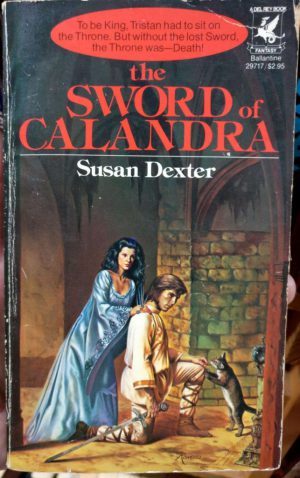
Basing your other world TOO much on Earth
This is one of the biggest and easiest traps to fall into. Earth’s history and many cultures are far-reaching and complex, and it can be tempting to borrow elements whole-sale without bothering to do much work creatively. Think of how many famous fantasy worlds resemble Medieval-era Earth completely, right on down to the rampant sexism and casual racism (*cough* Westeros *cough*). There’s nothing wrong with using our world’s history and cultures to inspire your made-up world, but make sure it doesn’t become a lazy short-cut. If there’s sexism or lack of diversity in your world, you need a better reason than “that’s how things were back then.” You’re writing fantasy, not historical fiction. Get creative!
Over-use of common nouns
You know what I’m talking about…
The Keeper of the Shadow Throne awaits the Birth of the Kindred.
A Rim-born Elder must name the Crystal Celebrant on the Day of Undoing.
Don’t get me wrong–naming things is half the fun of writing fantasy and science fiction. And capitalizing a regular old word or concept can definitely lend it a sort of otherworldly gravitas. Just be careful not to over-use this trope, or your world will quickly begin to feel lazy and unoriginal.
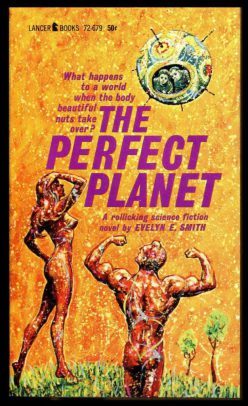 Making your races/cultures/societies too homogenous
Making your races/cultures/societies too homogenous
So the indigo-skinned Topworlders enslaved the ruby-eyed Burrow Folk a hundred years ago, and now they hate each other with a vengeance. That’s fine, but does every Topworlder relish owning a Burrow slave? And do all Burrow Folk agree with the politics of the Burrow Queen who surrendered to the Topworlders’ superior technology instead of fighting for their land?
Here’s where taking cues from humanity is a good thing. I could strike up a conversation with the person sitting beside me on the bus and within ten minutes we’d be able to think of at least a few things we disagreed on–politics, religion, whether cilantro tastes like soap. Races, cultures, even sub-cultures don’t have monolithic beliefs that trump individuality. Make sure the individuals in your alien races or fantasy societies reflect this diversity.
Introducing a world-changing technology/magic without taking into account all its ramifications
“It’s like our world, but everyone can teleport!”
Yikes. The minute you start talking about wide-spread teleportation, it ceases to be anything like our world. How could it be? Something as potentially life-changing as that would have first-order, second-order, and third-order effects on the way a world was structured and the way its citizens operated within it. Do your world the service of thinking through massive changes in technology or magical power, and what kind of structural changes might arise from that.
Language that doesn’t reflect the world
Contextual short-hands and idioms are rife in the English language (or whatever language you’re writing in!) and they can really trip you up if you’re not careful. This is something I’m constantly correcting in my own worlds–if a concept or idea doesn’t exist in the world you’re creating, why would the character make any kind of reference to it? Good examples of this might be “inching along” if the unit of measurement isn’t inches, or “red as a rose” when there aren’t roses in space.
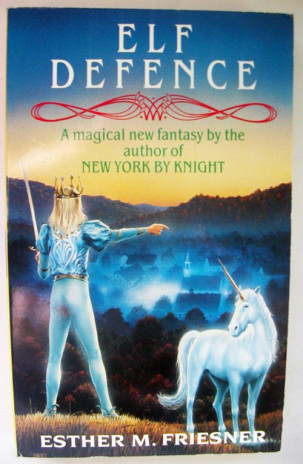 Not thinking about minutiae
Not thinking about minutiae
Do you ever have that moment when you’re watching an intense adventure movie and you think to yourself “Good thing none of them have had to poop this whole time.”?
Worlds, at their core, are pretty boring. Your character may be battling the Dark Overlord of Doom, but the rest of the world isn’t. There’s waste removal and food service and communication infrastructure and architecture and the menial jobs that hold a society together. While your novel doesn’t have to focus inordinately on these things, it helps if you as an author have a basic understanding of how these processes work in your world, so there’s a seamless backdrop for the story to play out against.
Unless you’ve created a magical and majestic world were people literally just don’t poop.
Basing one-dimensional fictional ethnic groups on real-life ethnic groups
Okay, this is basically a continuation of the very first point, but it’s kind of a biggie. Rule of thumb, if you want to have Italians (or Native Americans, or the Irish, or Nigerians) in your fantasy or science fiction novel, you’re going to have to do your utmost to create an accurate and nuanced view of Italian culture. What you cannot do–please please don’t–is name them Etolians and have them running around shouting “Mamma Mia!” while they stuff their faces with spaghetti.
Any cultural or ethnic group within your novel should have multiple dimensions and a believable culture regardless of whether your main character comes from this culture or sees it as “other.” And this is where it gets tricky–the more your fictional group resembles the real-world group, the more you’re going to have to worry about being respectful and true to life. This becomes especially true when dealing with marginalized groups, but should really be implemented across the board. When in doubt, find a sensitivity reader, but that should be your back-up plan. Do your homework, and make sure you’re not basing a fictional ethnic group on a real-world ethnic group just because it’s easy.
Well, that’s world-building in a very large nutshell. Any questions? At the end of the day, creating a made-up world as complex, multi-faceted, and often nonsensical as our own world isn’t something that happens overnight. Take your time, be creative, and don’t rely on short-hand to make your point.
What are your favorite/least favorite SFF world-building tropes? Leave your thoughts in the comments below!
March 10, 2017
Ode to Buffy
She saved the world. A lot.
I didn’t discover Buffy the Vampire Slayer until sophomore year of college, years after the original series had ended. I checked out the first season on DVD from my university library, vaguely remembering half an episode I’d watched at a friend’s house in middle school and looking for some way to procrastinate. (This is pre-Netflix, folks.) I had no idea what I was getting myself into.

From the very first wolf-howl in that old-school opening credits montage, I was hooked. No, scratch that–I was in love. Set against a delightfully 90’s backdrop of denim skirts, pleather jackets, and fluffy bangs, the show sucked me in with its tight writing, colorful characters and yes, its heart. I commandeered the communal TV, let my roommates know who was the new head of the household (Buffy Summers, obvs) and settled in for one long, wild ride.

The heart and soul of the show is, of course, Buffy Summers, a sixteen-year-old California blonde with a petite frame and skimpy outfits who just happens to have superpowers. There’s a line in the first episode where a voice-over explains exactly who Buffy is:
In every generation there is a Chosen One. She alone will stand against the vampires, the demons, and the forces of darkness. She is the Slayer.
I remember one word always stuck out at me in that introduction, and it was the word alone. She alone will stand against the forces of darkness. In all the billions of humans on earth, Buffy was the only one with the power to face down evil. How’s that for female empowerment! But Buffy was never a steely-eyed warrior raised from birth with a stake in her hand. No–Buffy was the kind of female superhero I’d been looking for my whole life: spunky with a side of snark, who still had to worry about homework, bad hair, and mean girls when she wasn’t saving the world from ancient vampires with fruit punch mouth or ravening demon hordes from Sunnydale’s unfortunate Hellmouth problem.

And the truth was, Buffy didn’t stand alone. Supported by her chosen cadre of misfits and nerds (nicknamed the Scoobie Gang in Episode 2), Buffy always had people to rely on. Willow–Buffy’s closest female friend, a tech geek-turned-witch–provided the brains to Buffy’s brawn, and provided a quiet, thoughtful foil to Buffy’s occasionally brash temperaments. Xander–the class clown, whose sense of humor only rarely outshone his taste in loud Hawaiian shirts–was always ready to back Buffy up, despite his lack of powers whatsoever. And of course, Giles, Buffy’s Watcher and stand-in father figure. With a cool British demeanor and an encyclopedia of esoterica in his neatly combed head, Giles was always the voice of reason in a tempest of insanity. Some of the most touching moments in the show, for me, came from the deep but often fraught relationship between Buffy and Giles, played with grace and aplomb by veteran British actor Anthony Stewart Head.

And let’s not forget the Scoobies’ love stories. Spike, the wicked and charismatic Billy Idol look-alike (“Actually,” says Spike, “Billy Idol stole his look from me.”) whose complexity and range took him from villain to sidekick to love interest to villain to tortured hero. Tara, whose heartbreaking storyline took Willow to the brink of darkness. Anya, the cutest of the Scoobies–who knew a revenge demon was capable of love? And of course, Angel, the progenitor of the “vegetarian vampire” trend and, in my opinion, the most important relationship on the show. Buffy and Angel’s classically Gothic relationship encapsulated so much of what made the show so engrossing: darkness juxtaposed against light, evil against good, damnation against the possibility of salvation.

I wonder if Joss Whedon and the cast of Buffy the Vampire Slayer guessed, when they were just starting out, what a phenomenon the show would become. Twenty years to the day since the first episode aired, there are now TV spinoffs, novels, graphic novels, coloring books and a clothing line. I guess even now, two decades later, it’s hard to forget the brave teenager with a stake in one hand and a crossbow in the other, dusting vamps and saving the world from one Big Bad after another. Even if it meant risking–or even sacrificing–her life.

December 1, 2016
Holidays Are For Reading

Humbug!
I was always a voracious reader. As a kid, most of my free time was spent reading. Picture books, chapter books, horse magazines, fairy tales; pretty much anything I could get my grubby little hands on. But as I got older, school and friends and extracurricular activities started taking up more of my free time, and my reading time was more and more often confined to bedtime and weekends (heavens forbid). And that’s when I discovered the magical time known as the winter holidays.
Just think–two glorious weeks empty of schoolwork and extracurriculars! Friends off to visit relatives or tied up with family obligations. Shorter days. The winter break was, for me, a series of long, beautiful hours just asking to be filled up with reading. Plus, for Christmas I was guaranteed a pile of new and exciting books just waiting to be cracked open and devoured.
In middle school, my grandmother sent me Harry Potter and the Sorceror’s Stone. I sat curled up on the sofa in front of a roaring fire for hours and hours and hours. I did not come up for air until I had read every wonderful word of that book, and when I finally dragged myself off the couch it was to insist that my mom drive me to the bookstore to buy the next two installments (The Goblet of Fire wouldn’t come out for two years yet.)
Even though I’m older and the winter holidays are no longer completely free of obligations, this time of year still provides a special opportunity to curl up and read. Some of my happiest memories involve Christmas lights, a cozy blanket, and a great book. No matter where in the world I am, or who I spend the holidays with, I can always count on ample opportunities to stick my nose firmly in my novel of choice and keep it there until I choose.
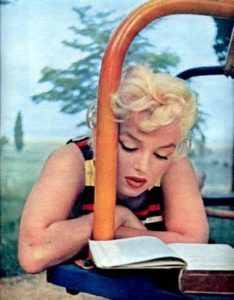
No time for real life. Can’t
you see I’m reading?
I’ve devoured a lot of books in my life, but some of my favorite and most memorable reading experiences have happened over the holidays. The first Harry Potter book. Crown Duel, by Sherwood Smith. The Glass Castle, by Jeanette Walls. Black Swan Green, by David Mitchell. I had my heart broken by The Fault in Our Stars, by John Green. One Christmas, I even burned through both The Name of the Wind and The Wise Man’s Fear by Patrick Rothfuss. And those are not short books.
In short, Christmas wouldn’t be Christmas for me without a healthy dose of binge-reading. So if you’ve been busy with gifts and cooking and entertaining, maybe take a minute (or hour) to sit down with that book you’ve been meaning to read. You deserve it.
Do you love reading over the holiday season? Do any books feature in special holiday memories? Share your thoughts below!
October 31, 2016
Monster Mash Part III: Vampires
Black clouds scud across the moon, nearly full. The chill breeze has a little…bite to it. A tap-tapping on the window startles you out of your slumber. Perhaps it is only a tree branch, shaking in the wind. Or perhaps it is something else? Someone else?
Pop culture may have remade vampires into sexy, brooding vegetarians, but Halloween reminds us that while vampires might be fangtastic, and know how to have a bloody good time, they are ultimately denizens of the night who enjoy violence and murder. So let’s sink out teeth into literature’s creepiest vampires…
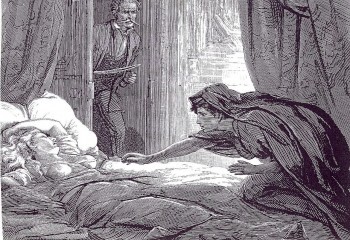
That’s what friends are for!
1. Carmilla, Carmilla
Beautiful, languid, and mysterious, Carmilla insinuates herself into the lives of innocent young women, one at a time. Her mercurial moods and unsettling sexual advances distract her prey from her exotic tastes: the catlike monster that visits them in their nightmares and drinks of their blood is really her. Eventually, each girl wastes away and dies, leaving Carmilla free to find a new female companion. Best friends forever…or until you die.
2. Edward Cullen, Twilight
One of the most insidious vampires in literature, Edward lures Bella–his teenaged prey–with his brooding demeanor and ascetic lifestyle, then utilizes psychological tactics such as stalking, threat of violence, and abandonment to confuse her and alienate her from her species. Finally, Bella succumbs to Stockholm Syndrome and marries Edward, who is then able to complete his goal: impregnate his human wife with his unnatural half-vampire spawn.
3. Claudia, Interview with a Vampire
After being sired as a child by her adoptive fathers, Louis and Lestat, Claudia matures into a ruthless, murderous vampire with the face of a doll, who “appears to her victims as a little angel” before luring them to their bloody deaths. In cold blood, Claudia attempts to destroy Lestat by feeding him the poisoned blood of a young boy, and she manipulates Louis into doing various dastardly deeds, including siring an innocent woman so Claudia could have a “mother.” Sugar and spice and everything nice…
4. Kurt Barlow, Salem’s Lot
In Stephen King’s classic novel, Barlow is an ancient, master vampire who terrorizes the small town of Jerusalem’s Lot when he invades and quickly begins slaughtering and turning the citizenry. He causes some bad blood by performing human sacrifice before moving on to blood-letting, hostage-taking, murder of the elderly, and finally subversion of religious figures. This vampire really goes for the throat.
5. Miriam Blaylock, The Hunger
Once every few hundred years Miriam, a vampire whose life began in ancient Egypt, assuages her loneliness by siring a human to be her half-vampire companion and lover. Together they hunt, feed, and slaughter. But eventually these companions wither away into dusty, bloodless corpses, unable to die yet still conscious and aware. Unable to put her lovers out of their misery, Miriam instead encases the half-living corpses in coffins and keeps them with her for eternity. Talk about skeletons in the closet!
[image error]
“I don’t drink…vine.”
6. Count Dracula, Dracula
Ah yes, Dracula–a vampire who really sucks. After luring Jonathan Harker to his decaying castle in the Carpathian Mountains and subjecting the young man to unnatural penetration by his three vampiric brides, Dracula infiltrates London and begins menacing the beautiful Lucy Westenra and her companion, Mina Murray. He feasts upon Lucy’s blood until she dies and resurrects as a violent vampire herself; then, with so much at stake, Mina falls under the Count’s thrall, betraying her fiance and friends for Dracula’s sake. With his potent combination of sexuality, violence, and aristocratic charm, Dracula rains a dark terror upon London, and imparts a lasting and toothsome legacy to Western Literature.
Do you have a favorite literary vampire? Leave your thoughts in the comment section below! Also, be sure to check out Monster Mash Part I: Ghosts and Monster Mash Part II: Witches to get yourself geared up for Halloween!
October 28, 2016
Monster Mash Part II: Witches
A dank fog creeps between trees that reach with skeletal claws towards a darkening sky. Brittle leaves clatter together in a chill wind that moans over chimney-tops and hammers at windows well-shuttered against the night.
Are those bats that flit across the moon and cast shadows over unlit thresholds? Or something worse? Hold each other tightly and keep your doors barred, children, for something wicked this way comes.* In no particular order I present some of the scariest literary witches.
*Author’s note: I am well aware that not all witches have warts or fly on broomsticks, and (to quote Xander Harris) “witches they were persecuted. Wicca good and love the earth and women power and I’ll be over here.” In the spirit of Hallowe’en I am choosing to ignore this fact.
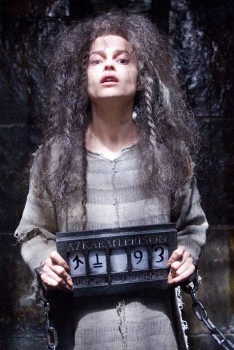
Bellatrix, complete with meth teeth.
1. Bellatrix Lestrange, Harry Potter Series
Voldemort’s right hand woman and a die-hard Death Eater, Bellatrix is deeply evil. Sent to Azkaban for torturing Neville Longbottom’s parents until they went permanently insane, Bellatrix is also responsible for the curse that kills Sirius Black, her cousin and Harry’s godfather. Dumbledore describes her as “…dear Bellatrix, who likes to play with her food before eating it.” Yikes.
2. The Witch of the Waste, Howl’s Moving Castle
After seducing Howl by appearing to him as a pretty young woman, the Witch puts a curse on him so that the moment he falls in love he will have to return to her side. Later, she curses young Sophie so that she turns into an ancient crone who cannot speak of the spell to anyone. I wouldn’t want to get on this curse-happy Witch’s bad side!
3. The Weird Sisters, Macbeth
In Shakespeare’s famous play about the downfall of a Scottish thane, these three witches act as agents of chaos and destruction. Chanting creepily upon the moor, they foretell Macbeth’s rise to power, inciting him to corruption, regicide, and ultimately war. “Fair is foul and foul is fair: Hover through the fog and filthy air!” Ugh, no thanks!
4. Medea, Medea
In Euripides’ play, Medea is a barbarian witch from Colchis who, when her husband Jason abandons her to marry a princess, decides to take dire action. She sends a poisoned gown and coronet to the princess, which kills both her and her father, the king. And because killing Jason’s bride-to-be wasn’t hurtful enough, she then murders her own children to exact revenge on her faithless husband.
5. The Wicked Witch of the West, The Wonderful Wizard of Oz
Desperate to obtain Dorothy’s ill-gotten silver shoes, L. Frank Baum’s Wicked Witch of the West goes to great lengths to destroy Dorothy and her companions. She sends packs of wolves, swarms of bees, murderous crows and finally winged monkeys to enslave Dorothy. Although famous for her green skin in the movie adaptations, Baum’s witch had only one eye, which was powerful as a telescope.
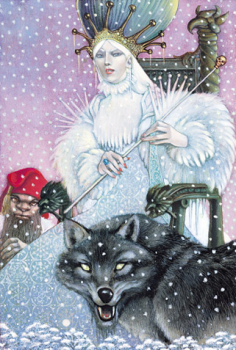
Jadis, wolf, dwarf. Not pictured:
Turkish Delight.
6. Jadis/White Witch, Chronicles of Narnia
In The Magician’s Nephew Polly and Digory awaken Jadis, a powerful sorceress who spoke a Deplorable Word that destroyed all life on Charn except her own. Later, she becomes the White Witch and plunges Narnia into an everlasting winter where Christmas never comes. She turns Edmund against his siblings, transforms any dissenters into stone, and ultimately murders Aslan in a hideous sacrifice on the Stone Table.
Moral of the story: never eat Turkish Delight when offered by women you don’t know; no, never eat Turkish Delight.
Do you have a favorite literary witch? Leave your thoughts in the comment section below! Also, check out Monster Mash Part I: Ghosts!
October 26, 2016
Monster Mash Part I: Ghosts
The end of October approaches–the days grow colder and darker and the leaves twist and scurry, pushed and pulled by chill breezes. But is it only the wind that taps against our windows and creeps beneath our locked doors? Or is it something more sinister, something that lurks in shadows and darkens our dreams?
With Hallowe’en less than a week away, I thought I’d tackle some of the creepier monsters in myth and legend, starting today with ghosts. The spirits of the dead are known to creep closer as November approaches, waiting for that time when the veil is thin enough for them to go wailing out into the night, bemoaning lives wasted and loves lost. With no further ado, here are six of the creepiest ghosts in literature.

“Revenge my murder most foul!”
1. King Hamlet, Hamlet
“Murder most foul!” Shakespeare employed ghosts as a device in more than one of his plays, but the ghost of Hamlet’s murdered father is by far the creepiest. He wanders purgatory with blood trickling from his ear, reliving his murder and demanding revenge. Later, he haunts his traitorous wife’s closet wearing only a nightgown. *shudder*
2. The Headless Horseman, The Legend of Sleepy Hollow
Supposedly a Hessian soldier hired to suppress the American Revolution who was beheaded by an errant cannonball. Every night, astride a demonic steed, the headless specter gallops through the streets of Sleepy Hollow with his severed head lashed to the pommel of his saddle. And beware to those who cross his path–he might subject you to the same fate that ended his life.
3. The Bloody Baron, Harry Potter
Forced to hunt down and then slay his love Helena Ravenclaw after she stole her mother’s diadem, the Bloody Baron committed suicide out of remorse for his sin. Now, he haunts Hogwarts Castle covered in rivulets of his own blood, frightening young witches and wizards and terrifying Peeves the Poltergeist.
4. Jacob Marley, The Christmas Carol
The late Jacob Marley appears to Scrooge on Christmas Eve, a terrible specter who is double shackled with long chains made of “cash-boxes, keys, padlocks, ledgers, deeds, and heavy purses wrought in steel.” Symbols of his greedy and extortionate behavior in life, Marley rattles these chains at Scrooge to warn him of the purgatory he will face if he does not alter his ways.

“Let me in!”
5. Catherine Earnshaw, Wuthering Heights
Another victim of love gone desperately wrong, Catherine wanders the moors in the form of a young, lost girl. Doomed to forever haunt the mansion of the man she loved but spurned in life, Catherine knocks on the windows of unsuspecting houseguests, clawing at their arms with ice cold fingers and demanding “Let me in! Let me in! I’m come home–I’d lost my way on the moor!”
6. The Heart, The Tell-Tale Heart
After the carefully calculated murder of an old man for no better reason than his creepy eyes, the criminal who committed the murder begins to hear the insistent heartbeat of the old man from beneath the floorboards. Thump-thump. Thump-thump. Thump-thump. The sound grows steadily louder until the murderer begins to lose his mind from guilt, and finally breaks down and confesses his crime.
Do you have a favorite literary ghost? Leave your thoughts in the comment section below, and make sure to check back for Monster Mash Part II: Witches!
May 4, 2015
The Perfect First Page
This post originally appeared at Spellbound Scribes.
As I once more begin the arduous process of drafting a new manuscript, I’ve been giving a lot of thought to the mechanics and architecture of story-telling. Of course there’s no right way to tell a story, but there are certain elements that must be in place for a story to be effective. And–if we’re starting at the beginning–the first thing we have to think about is, well, the beginning.

No pictures???
It’s no secret in the publishing industry that the beginning of a manuscript is of the utmost importance. To agents, to editors, and to potential readers alike. The first 250 words…the first page…the first chapter. The opening of a book is what introduces your work to your reader, and, if all goes well, draws them in and makes them keep reading. But what exactly is supposed to be going on in this crucial stage, and how do we as writers make that happen? While there’s no perfect way to do it, here are some of the things I think are absolutely necessary to nailing the perfect first page.
1. Start with action. Okay, this needs a little clarification. By action I don’t necessarily mean a sword fight or a horse race. By action, I mean something needs to be in the process of happening. The fancy literary term is in media res, or in the middle of things. Something is being revealed. Something is going terribly wrong. Someone is in trouble. There must be a sense that something is happening, and will continue to happen.
Another way of putting this: don’t lead with extensive backstory or a detailed explanation of who and where and why. These things are important, but a paragraph of exposition on your first page may just kill your reader’s desire to continue past that first page. Lead with action; the rest will follow.

Who? Get it?
2. Introduce your main character. Have you ever read a book that began with something happening to someone, and then it turned out that character was not, in fact, the protagonist of the story? I have, and I always feel a little cheated. Your readers are going to assume that the first person they meet is your main character. So let them meet him or her. And remember, first impressions matter.
Meeting your protagonist is the first point of connection for your reader. Whatever assumptions they make right off the bat might just stick with that throughout the story. So make that first impression count, and give them a sense of who your character is and what motivates them.

Me, pretty much every day.
3. Show us your world. When they open that first page, readers are latching onto any and every detail that will give them a sense of setting and place. What do the characters look like? What are the surroundings? How is it similar to what the reader is familiar with, and how is it different? Without details to bring the scene into focus, the reader might feel a little lost, as though the action is happening in a vacuum.
The challenge here is painting a picture…without going overboard with descriptions. Just like explanation and backstory, too much description on the first page may bore and alienate your reader. Give your reader a sense of place without resorting to a paint-by-number.
4. Give us a hint of voice. Your potential reader needs to know what makes your story different from all the others out there, and why they should read yours. That means that the style and voice that makes you unique and sets your book apart from others needs to be immediately apparent. Is your POV character always making cracks regardless of the situation? Do you rely on muscular active prose? Whatever makes you stand out, include it in the first page. Let your hard-won craft shine!
Sound hard? IT IS. Welcome to the big leagues! While there’s no perfect way to open a manuscript, keeping these points in mind will help you begin your amazing story in a way that will have readers clamoring for more!
What do you like to include on your first page? What do you like to see on other writer’s first pages? Leave your thoughts below!
April 27, 2015
Ten Things About My Writing
Inspired by the super cool Tara Sim, who posted ten quirky things about her writing process. As a creative who usually works totally isolated from the real world, it’s easy to forget that my weird processes are, well, weird. I can’t explain it, but each of these bizarre habits makes it possible for me to create the way I do!
1. I am a notebook hoarder. At any given time, I have anywhere from three to seven notebooks in general rotation, filled with notes and snippets and half-baked ideas and sketches and names. And while they vary significantly in size, the notebooks are almost all black.

2. I am very easily distracted. Finding a groove where nothing filters in from the outside world is a rare, yet much coveted happenstance. God forbid anybody calls me when it miraculously does happen.
3. In a similar vein, I can’t listen to music with lyrics when I’m working. I rely almost entirely on movie soundtracks, with a little bit of jazz and classical thrown in for variety. Bear McCreary is my current go-to composer.

4. I always have a word or phrase that I overuse in each project. In Blood King, that word was “judder.” Things were juddering all over the place. In Reverie, I had to edit out like eighteen instances of the word “slither.” Thank goodness I have beta readers to catch these things for me!
5. Sometimes when I’m stuck on a scene I pace around the living room acting out what the characters might potentially do or say next. But I only do it when I’m very, very alone.
6. I swear by a program called “Write or Die.” When you don’t write a certain number of words per minute, or you stop typing for a certain amount of time, the screen starts to flash bright red and blares awful music or irritating noises at you until you start typing again. It’s really great for bulking up on word count.

7. I’m a perfectionist. And I hate editing. So I always try to get things as close to right as possible in the first draft. The concept of a “vomit draft” is not something I ascribe to.
8. I call my inner critic “Yelling Bird,” after the character in Jeph Jacques’ webcomics. This is because Yelling Bird is loud, mean, and uses lots and lots of profanity. And is really hard to shut up.

9. I used to be a die-hard “pantser,” as in, I just wrote from the cuff with nothing more specific than a general plan for where a story was going to go. These days, I’m more of a plotter, although my outlines are pretty general to allow for lots of improvisation in the individual scenes.
10. Although writing can be hard, frustrating work, I truly love it and can’t imagine not doing it!
What are your writing quirks? Share yours in the comments section below!
March 5, 2015
Age of Blood Cover Reveal!
Age of Blood (Ash and Ruin #3) by Shauna Granger
Hope is a dangerous thing, but powerful. Hope keeps you going. Hope can keep you alive.
But hope can shatter your world.
Kat and Dylan have found a home, but the monsters are still out there. The pox and plague still ravage the world. They have hope of finding a vaccine, but their encampment isn’t equipped to develop it.
Dylan is still too weak from the pox to leave the encampment, so Kat must decide between staying by his side and protecting her last remaining family member as he leaves to find supplies. Separated for the first time since they came together, Kat and Dylan will have to fight their own battles to save what is left of their bloody world.
Kat will have to hold on to hope that she has anything left to save and someone to come home to.
If she can survive.
Add on Goodreads
Preorder on Amazon
Preorder on Barnes and Noble
Preorder on Kobo
About the series:
There are two inherent truths in the world: life as we know it is over, and monsters are real.
The Pestas came in the night, spreading their pox, a deadly plague that decimated the population. Kat, one of the unlucky few who survived, is determined to get to her last living relative and find shelter from the pox that continues to devastate the world. When it mutates and becomes airborne, Kat is desperate to avoid people because staying alone might be her only chance to stay alive.
That is, until she meets Dylan. Dylan, with his easy smile and dark, curly hair, has nowhere to go and no one to live for. He convinces Kat there can be safety in numbers, that they can watch out for each other. So the unlikely couple set off together through the barren wasteland to find a new life – if they can survive the roaming Pestas, bands of wild, gun-toting children, and piles of burning, pox-ridden bodies.
Amazon | Barnes and Noble | Kobo | Smashwords
 The world has ended, and hope is the most dangerous thing left.
The world has ended, and hope is the most dangerous thing left.
Battered and bruised after barely escaping San Francisco with their lives, Kat, Dylan, and Blue press north – desperate to reach the possibility of a new home.
But strange, monstrous ravens are tracking the remaining survivors, food is becoming scarce, gasoline is running short, and people are becoming suicidal, making survival almost impossible.
And the Pestas are growing bolder. Somehow, their numbers are growing.
The further north they go, the harder it becomes to ignore the signs that they’ve made a fatal mistake. Kat must face the impossible truth that there is no escape, there is no safe haven, and their worst nightmares don’t come close to their new reality.
Amazon | Barnes and Noble | Kobo | Smashwords
About the author:
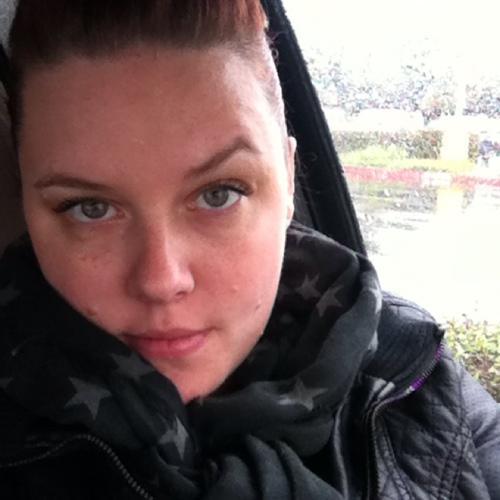 Like so many other writers, Shauna grew up as an avid reader, but it was in high school that she realized she wanted to be a writer. She released the first installment of her Paranormal YA Series, The Elemental Series, Earth, on May 1, 2011 and has since released four sequels, with the series coming to an end with Spirit. In December of 2013 she released the first in her Paranormal Post-Apocalyptic trilogy (Ash And Ruin Trilogy), World of Ash. Be sure to also check out her newest series: The Matilda Kavanagh Novels about a spunky witch just trying to pay her rent in West Hollywood. Shauna is currently hard at work on one too many projects, trying to organize the many voices in her head. It’s a writer thing.
Like so many other writers, Shauna grew up as an avid reader, but it was in high school that she realized she wanted to be a writer. She released the first installment of her Paranormal YA Series, The Elemental Series, Earth, on May 1, 2011 and has since released four sequels, with the series coming to an end with Spirit. In December of 2013 she released the first in her Paranormal Post-Apocalyptic trilogy (Ash And Ruin Trilogy), World of Ash. Be sure to also check out her newest series: The Matilda Kavanagh Novels about a spunky witch just trying to pay her rent in West Hollywood. Shauna is currently hard at work on one too many projects, trying to organize the many voices in her head. It’s a writer thing.
Stalkables:
Website | Facebook | Twitter | Instagram | Goodreads
About the Cover Artist Stephanie Mooney:

I am a 25-year-old graphic designer, artist, and aspiring author currently living in Cincinnati, Ohio. I’m a renaissance girl — a lover of all things creative and artistic. From the moment I learned to use my hands, I was writing stories about princesses and sketching ballerinas. I guess I never really stopped.
Most of my training has been informal, and many of my skills are self taught. In 2006-07, I spent a year interning at a church in Louisiana where I worked in their art and design department. In July 2007, they hired me as one of their designers. I worked there for three years, gaining experience in graphic design, advertising, set building, event planning, and product design. From there, I began my career in freelance design.
Many of my clients are indie authors looking for affordable cover designs. I love working with authors and getting excited about their stories with them. I’m still building my web portfolio, but I really enjoy designing and developing websites as well.
Stalkables:
December 15, 2014
Monthly Post at Spellbound Scribes!
Hey kids! The holiday season is upon us once again, so I’ve compiled a list of my favorite winter-themed reads over on the Spellbound Scribes blog. Go have a look-see and maybe something will catch your fancy!





